Chapter 11 Transport in Plants
- BoardCBSE
- TextbookNCERT
- ClassClass 11
- SubjectBiology
- ChapterChapter 11 Transport in Plants
- Chapter NameChapter 11 Transport in Plants
- CategoryNCERT Solutions
NCERT Solutions for class 11 Biology Chapter 11 Transport in Plants
NCERT Solutions for class 11 Biology Chapter 11 Transport in Plants consists of a detailed explanation of all the questions asked in the exercise of Chapter 11 Transport in Plants. Questions asked in Chapter 11 Transport in Plants are solved and explained with proper images and diagrams. Get the Chapter wise NCERT Solutions for class 11 Biology Prepared by the experts of HT.
Brief introduction of Chapter 11 Transport in Plants
Julius Sachs is known as the father of plant physiology. Plants are variable in height ranging from a few centimetre centimetres to 130 meters. Now there is a question How does such long-distance transportation of water, mineral, and food take place in plants? Also, we know that plants do not have any circulatory system like animals.
In the chapter anatomy of flowering plants, we have gone through two important complex permanent tissues that are xylem and the phloem.
Short-distance movement in plants like the movement of molecules within a cell or between adjacent cells can take place by diffusion. In plants, diffusion is only the means of transportation of gases.
Xylem in plants is responsible for the unidirectional conduction of water and minerals. Water and minerals are absorbed by roots from the soil. In roots, apoplast and symplast are responsible for the movement of substances.
The exchange of gases between the plant body and the atmosphere takes place largely with the help of stomata present in the leaf epidermis.
A concentration gradient is maintained for the movement of substance between two points.
Water potential is the free energy of water that is the tendency of the flow of water.
In this chapter, we will also get insight into how various force like transpiration pull, root pressure, and adhesion – cohesion is responsible for the ascent of sap.
Transport of photosynthates from source to sink to sink is bidirectional and takes place in masses or bulk by phloem.
Download pdf of NCERT Solutions for class 11 Biology Chapter 11 Transport in Plants

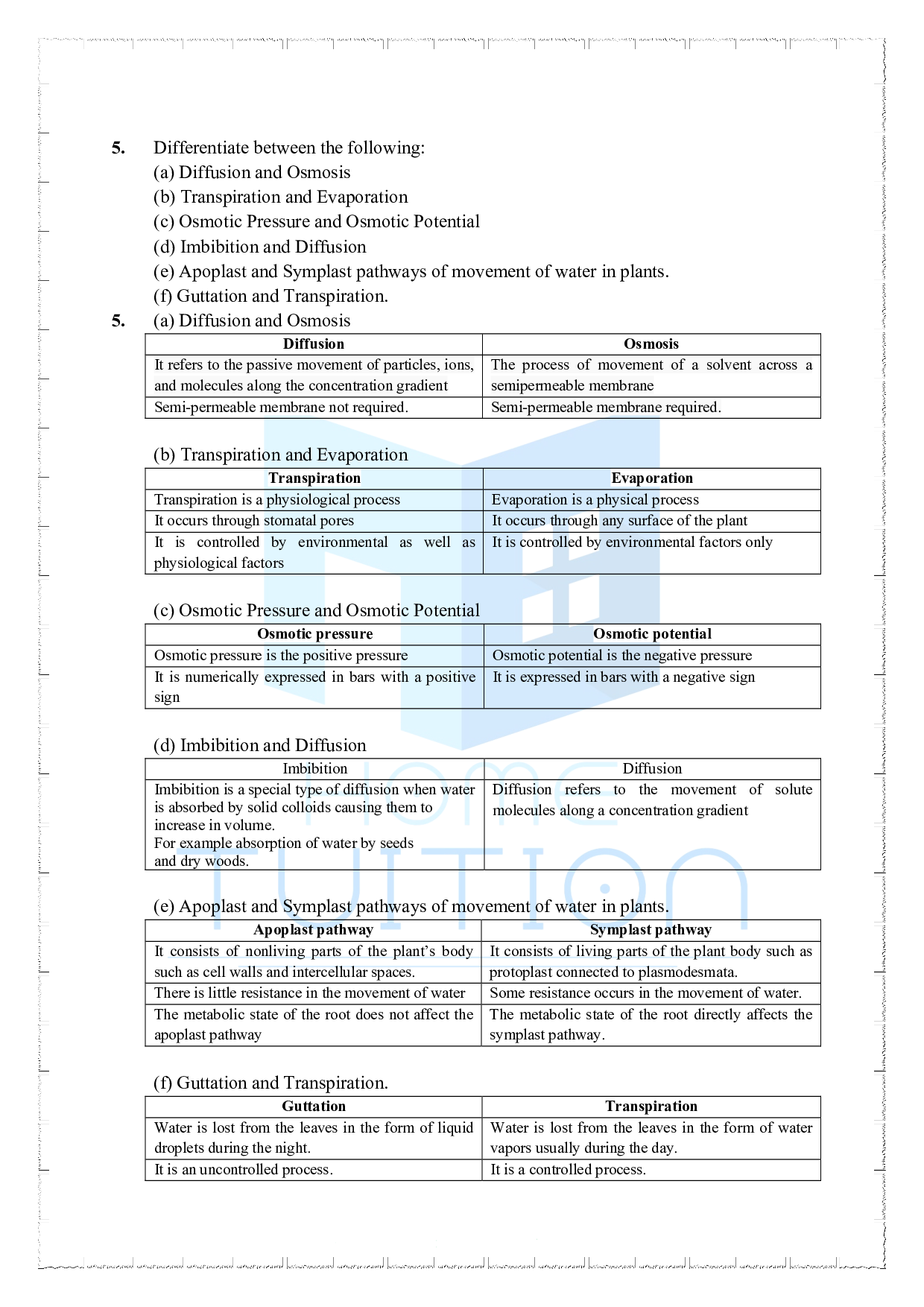
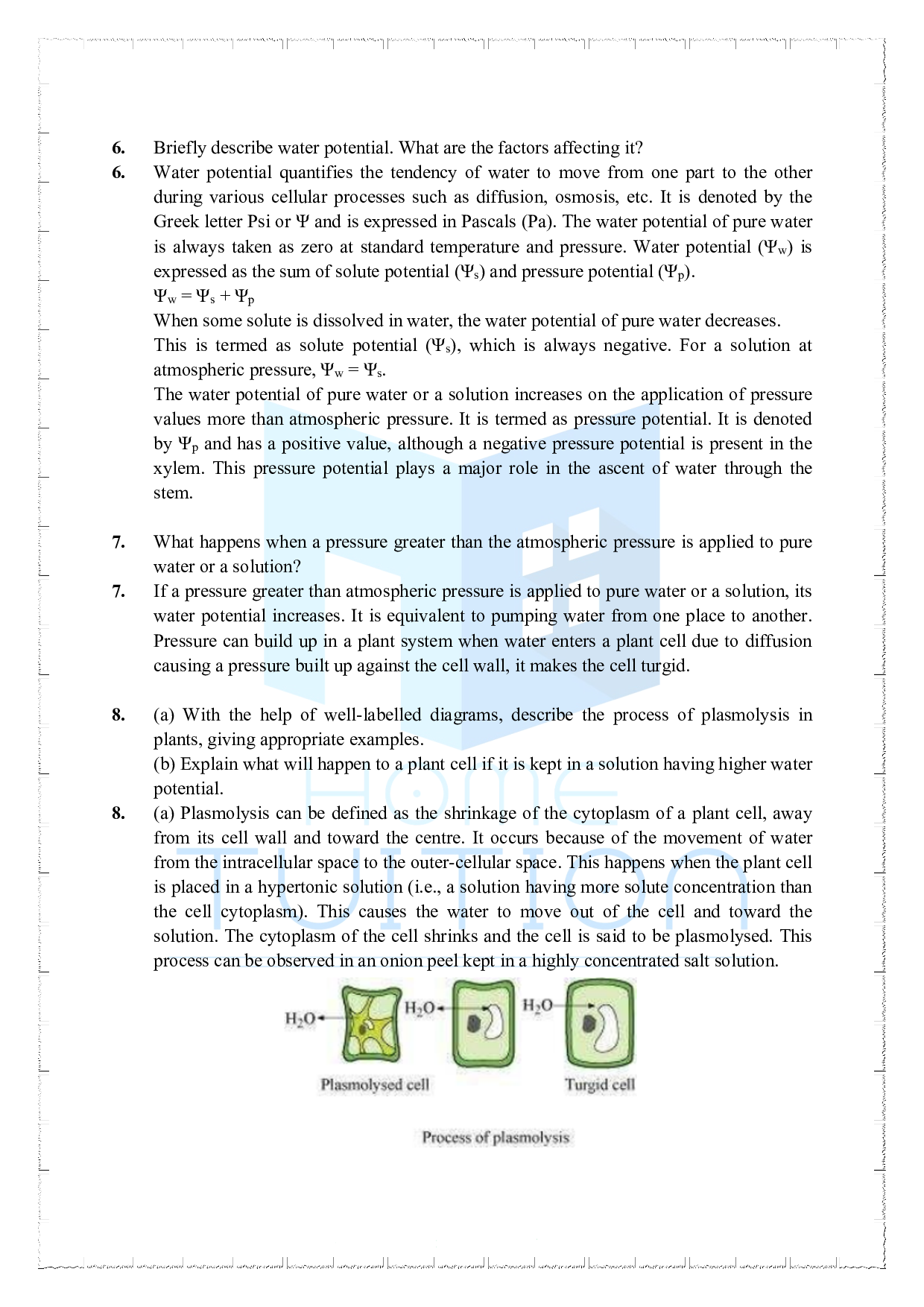
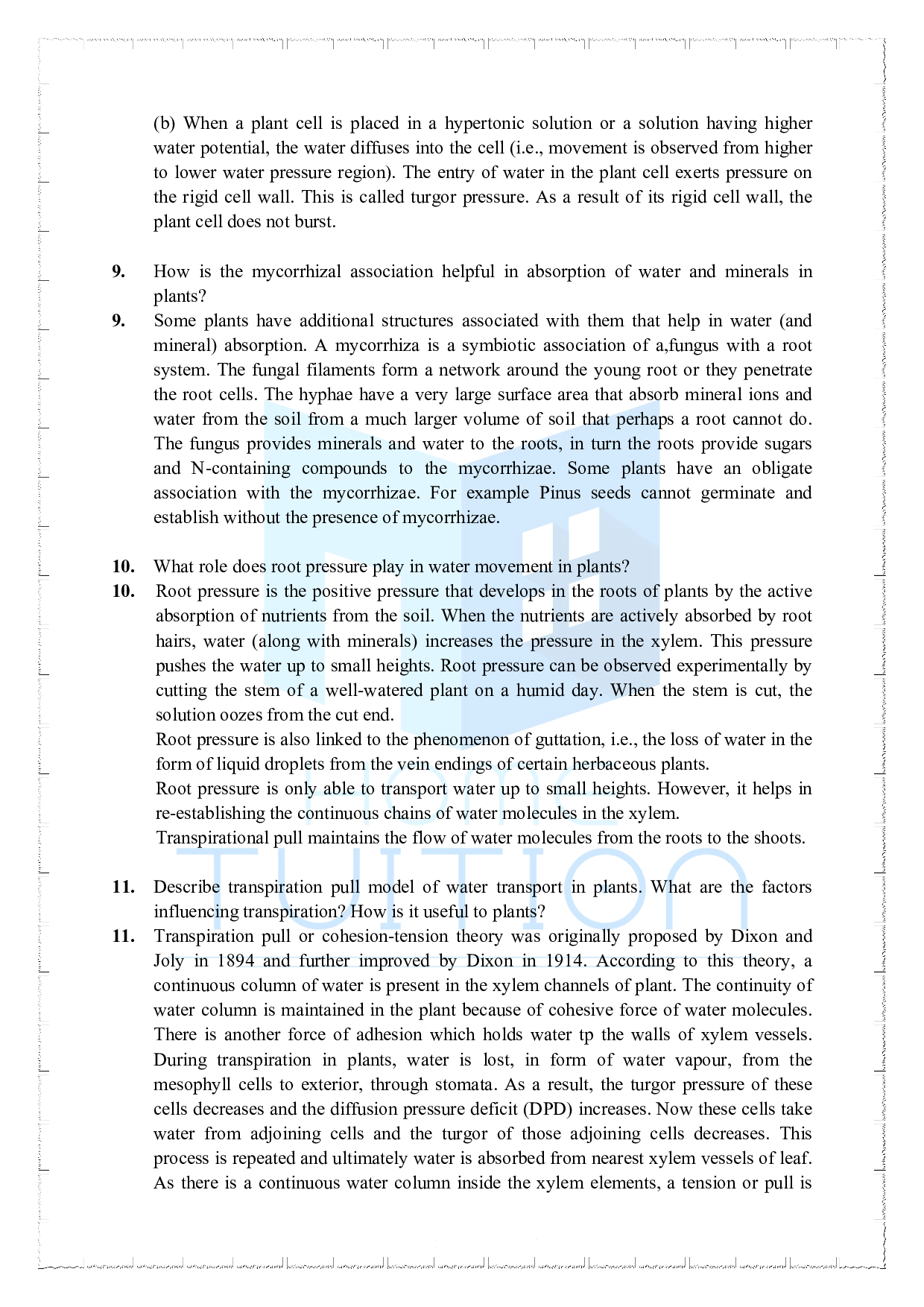

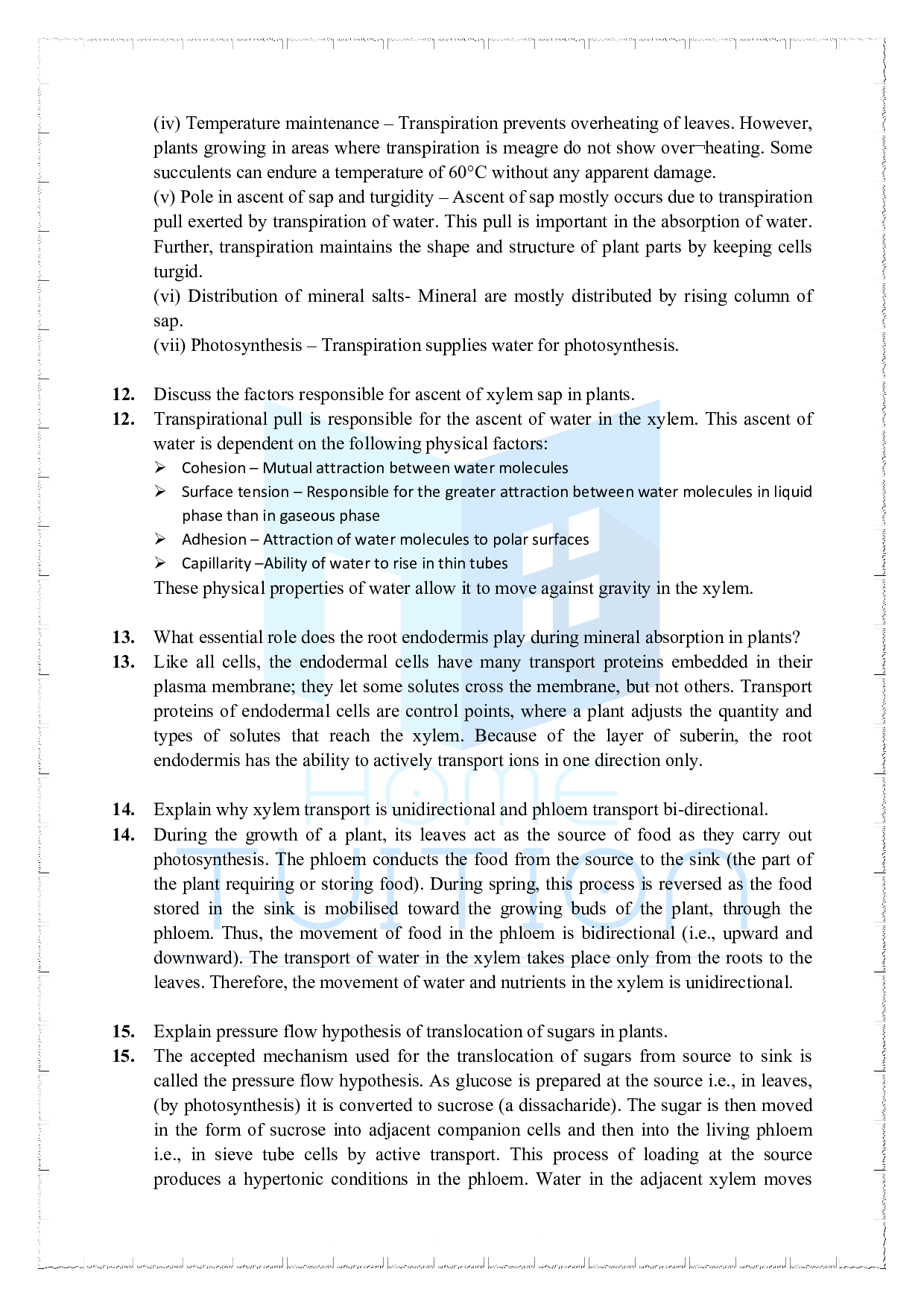
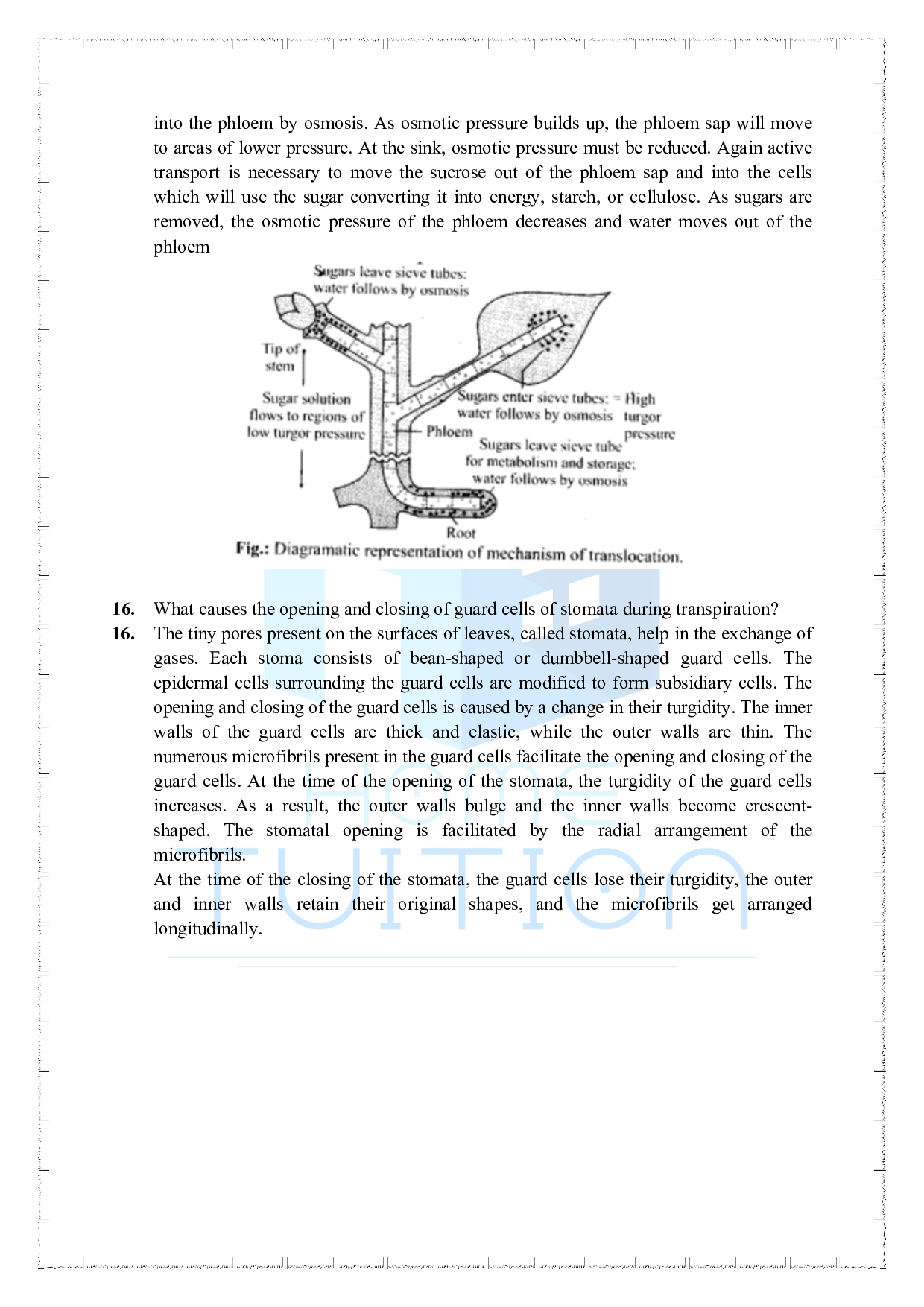
Related Links
- Chapter 1 The Living World
- Chapter 2 Biological Classification
- Chapter 3 Plant Kingdom
- Chapter 4 Animal Kingdom
- Chapter 5 Morphology of Flowering Plants
- Chapter 6 Anatomy of Flowering Plants
- Chapter 7 Structural Organisation in Animals
- Chapter 8 Cell the Unit of Life
- Chapter 9 Biomolecules
- Chapter 10 Cell Cycle and Cell Division
- Chapter 11 Transport in Plants
- Chapter 12 Mineral Nutrition
- Chapter 13 Photosynthesis in Higher Plants
- Chapter 14 Respiration in Plants
- Chapter 15 Plant Growth and Development
- Chapter 16 Digestion and Absorption
- Chapter 17 Breathing and Exchange of Gases
- Chapter 18 Body Fluids and Circulation
- Chapter 19 Excretory Products and their Elimination
- Chapter 20 Locomotion and Movement
- Chapter 21 Neural Control and Coordination
- Chapter 22 Chemical Coordination and integration